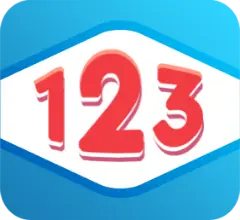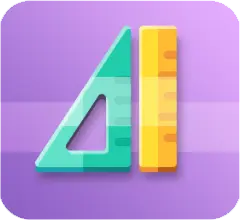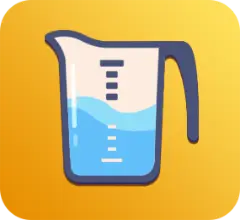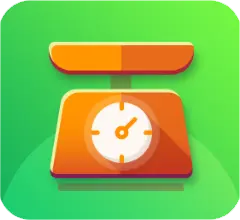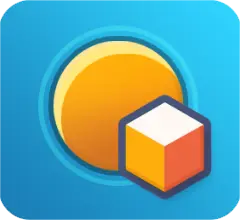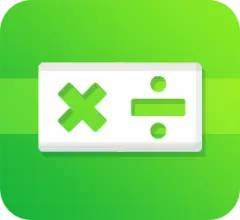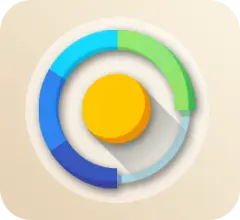2nd Grade Math
Math Explanation is an online resource that offers a wide range of math skills, lessons, and games for year 2 students. It covers various math topics, from basic arithmetic to advanced calculus, providing step-by-step solutions and explanations for different math problems. The platform teaches different methods and techniques to solve problems and offers detailed explanations for each step. It also allows students to check their answers, see examples, and learn tips and tricks to improve their math skills.
Start Practice Math Browse SkillsTopics
Browse Skills
Number and Algebra
-
Arranging numbers in ascending order
Whole Numbers
-
Arranging numbers in descending order
Whole Numbers
-
Comparing money
Whole Numbers
-
Comparing numbers more or less than
Whole Numbers
-
Counting and representing numbers in hundreds, tens and
ones
Whole Numbers
-
Counting backwards by 1s
Whole Numbers
-
Counting backwards by 2s
Whole Numbers
-
Counting backwards by 3s
Whole Numbers
-
Counting backwards by 5s
Whole Numbers
-
Counting backwards by tens
Whole Numbers
-
Counting beyond 100 - Number Chart
Whole Numbers
-
Counting blocks
Whole Numbers
-
Counting coins
Whole Numbers
-
Counting forwards by 10s
Whole Numbers
-
Counting forwards by 1s
Whole Numbers
-
Counting forwards by 2s
Whole Numbers
-
Counting forwards by 3s
Whole Numbers
-
Counting forwards by 5s
Whole Numbers
-
Counting Money
Whole Numbers
-
Counting on a number line by 2s, 3s, 5s and 10s
Whole Numbers
-
Counting using a number chart 2s, 3s, 5s and 10s
Whole Numbers
-
Estimating to the nearest hundred
Whole Numbers
-
Forming the largest or smallest number
Whole Numbers
-
Identifying equivalent values 5 dollars or more
Whole Numbers
-
Identifying equivalent values in collections of
coins
Whole Numbers
-
Identifying notes and coins
Whole Numbers
-
Identifying numbers one greater than a three-digit
number
Whole Numbers
-
Identifying numbers one less than a three-digit
number
Whole Numbers
-
Number sequence on number charts
Whole Numbers
-
Partitioning of place value 3 digits standard form
Whole Numbers
-
Partitioning place value 3 digits non-standard form
Whole Numbers
-
Problem solving involving coins
Whole Numbers
-
Problem solving involving coins Enough or not enough
Whole Numbers
-
Representing numbers as words From numbers to words
Whole Numbers
-
Representing numbers as words From words to numbers
Whole Numbers
-
Representing three-digit numbers using an abacus
Whole Numbers
-
Rounding to the nearest hundred
Whole Numbers
-
Rounding to the nearest ten
Whole Numbers
-
Stating place values
Whole Numbers
-
Stating place values Extended
Whole Numbers
-
Writing place value up to 999
Whole Numbers
-
Addition using the jump strategy
Additions and subtraction
-
Addition using the split strategy
Additions and subtraction
-
Horizontal addition with carrying
Additions and subtraction
-
Horizontal addition without carrying
Additions and subtraction
-
Horizontal subtraction with borrowing
Additions and subtraction
-
Horizontal subtraction without borrowing
Additions and subtraction
-
Inverse operation of addition and subtraction
Additions and subtraction
-
Linking subtraction numbers sentences
Additions and subtraction
-
Problem solving involving addition
Additions and subtraction
-
Problem solving involving money Addition
Additions and subtraction
-
Problem solving involving money Subtraction
Additions and subtraction
-
Problem solving involving subtraction
Additions and subtraction
-
Related addition and subtraction facts
Additions and subtraction
-
Solving Vertical addition with carrying
Additions and subtraction
-
Solving vertical addition without carrying
Additions and subtraction
-
Solving Vertical subtraction with borrowing
Additions and subtraction
-
Solving Vertical subtraction without borrowing
Additions and subtraction
-
Subtraction using the jump strategy
Additions and subtraction
-
Subtraction using the split strategy
Additions and subtraction
-
Describing number pattern in words
Patterns and Algebra
-
Increasing number patterns
Patterns and Algebra
-
Number sentence Addition
Patterns and Algebra
-
Number sentence Problem-solving with subtraction
Patterns and Algebra
-
Number sentence Subtraction
Patterns and Algebra
-
Comparing fractions
Fraction and decimals
-
Decreasing number patterns
Fraction and decimals
-
Fractions as equal parts of a whole
Fraction and decimals
-
Fractions with denominators of 2, 4 and 8
Fraction and decimals
-
Modelling a half, quarter and an eighth of a
collection
Fraction and decimals
-
Modelling a half, quarter and an eighth of an object
Fraction and decimals
-
Problem solving involving fractions
Fraction and decimals
-
Recording and relating parts to a whole
Fraction and decimals
-
Understanding fractions as part of a whole
Fraction and decimals
-
10 times table using groups
Multiplication & Division
-
12 Times table
Multiplication & Division
-
2 times table using groups
Multiplication & Division
-
3 times table using groups
Multiplication & Division
-
5 times table using groups
Multiplication & Division
-
Commutative property of multiplication
Multiplication & Division
-
Describing leftover
Multiplication & Division
-
Division by 10
Multiplication & Division
-
Division by arrays - 10s
Multiplication & Division
-
Division by arrays - 2s
Multiplication & Division
-
Division by arrays - 3s
Multiplication & Division
-
Division by arrays - 5s
Multiplication & Division
-
Division by sharing - 10s
Multiplication & Division
-
Division by sharing - 2s
Multiplication & Division
-
Division by sharing - 3s
Multiplication & Division
-
Division by sharing - 5s
Multiplication & Division
-
Identifying fair shares
Multiplication & Division
-
Model Division by repeated subtraction 10s
Multiplication & Division
-
Model Division by repeated subtraction 2s
Multiplication & Division
-
Model Division by repeated subtraction 3s
Multiplication & Division
-
Model Division by repeated subtraction 5s
Multiplication & Division
-
Model division by sharing into rows and columns
Multiplication & Division
-
Multiplication as repeated addition 10s
Multiplication & Division
-
Multiplication as repeated addition 2s
Multiplication & Division
-
Multiplication as repeated addition 3s
Multiplication & Division
-
Multiplication as repeated addition 5s
Multiplication & Division
-
Multiplication by repeated addition on a number line
Multiplication & Division
-
Multiplication with an array of 10s
Multiplication & Division
-
Multiplication with an array of 2s
Multiplication & Division
-
Multiplication with an array of 3s
Multiplication & Division
-
Multiplication with an array of 5s
Multiplication & Division
-
Multiplication with the same properties
Multiplication & Division
-
Problem solving involving division with left overs
Multiplication & Division
-
Problem solving involving multiplication and repeated
addition
Multiplication & Division
-
Problem solving with division
Multiplication & Division
-
Problem solving with multiplication
Multiplication & Division
Measurement and Geometry
-
Comparing length with m and cm
Length
-
Comparing the lengths using objects
Length
-
Converting centimetres to metres
Length
-
Converting metres to centimetres
Length
-
Measuring length and width
Length
-
Measuring lengths using formal units Centimetres
Length
-
Measuring lengths using formal units Half a metre
Length
-
Measuring lengths using formal units Metres
Length
-
Measuring lengths with informal units
Length
-
Using informal units to measure distance
Length
-
Calculating area using a grid
Area
-
Calculating area using a grid
Area
-
Comparing areas
Area
-
Identifying patterns in a grid
Area
-
Calculating volumes using blocks
Volume & Capacity
-
Comparing and estimating volumes using informal
objects
Volume & Capacity
-
Comparing and ordering volumes using informal units or
blocks
Volume & Capacity
-
Ordering capacities of volume
Volume & Capacity
-
Ordering volume using informal objects
Volume & Capacity
-
Record using informal units
Volume & Capacity
-
Comparing equivalent mass using a scale
Mass
-
Comparing masses with informal units
Mass
-
Differences in mass
Mass
-
Measuring mass with informal units
Mass
-
Problem solving using mass
Mass
-
Calculating month, week, days using events
Time
-
Conversion of time Hours to minutes
Time
-
Estimating time taken to complete an activity
Time
-
Estimating time taken to complete an activity
Extended
Time
-
Identifying the hour that just passed
Time
-
Ordering time by events
Time
-
Ordering time using informal units
Time
-
Reading a digital clock
Time
-
Reading an analog clock
Time
-
Recording time using an analog clock
Time
-
3D vs. 2D shapes
3D Shape
-
3D vs. 2D Extended
3D Shape
-
3D vs. 2D Surfaces
3D Shape
-
Describe 3D objects with live objects
3D Shape
-
Faces, edges and vertices
3D Shape
-
Relationships between 3D objects and 2D shapes
3D Shape
-
Sorting 3D objects
3D Shape
-
Using terms surface, face, edge and vertex to descrive
3D objects
3D Shape
-
Combining and splitting shapes
2D Shape
-
Full, quarter and half turns
2D Shape
-
Identify 2D shapes in different orientation
2D Shape
-
Identifying and describing 2D shapes
2D Shape
-
Lines of symmetry
2D Shape
-
Naming 2D shapes
2D Shape
-
Quarter turns & half turns
2D Shape
-
Slide vs. Flip
2D Shape
-
Slide, turn and flip
2D Shape
-
Turning shapes clockwise and anti-clockwise
2D Shape
-
Turning shapes clockwise and anti-clockwise Extended
2D Shape
-
Describing position
Position
-
Identifying objects on a grid
Position
-
Identifying objects on a map
Position
Statistics and Probability
Math Explanation
Australia's Most Engaging Primary Maths Software.
